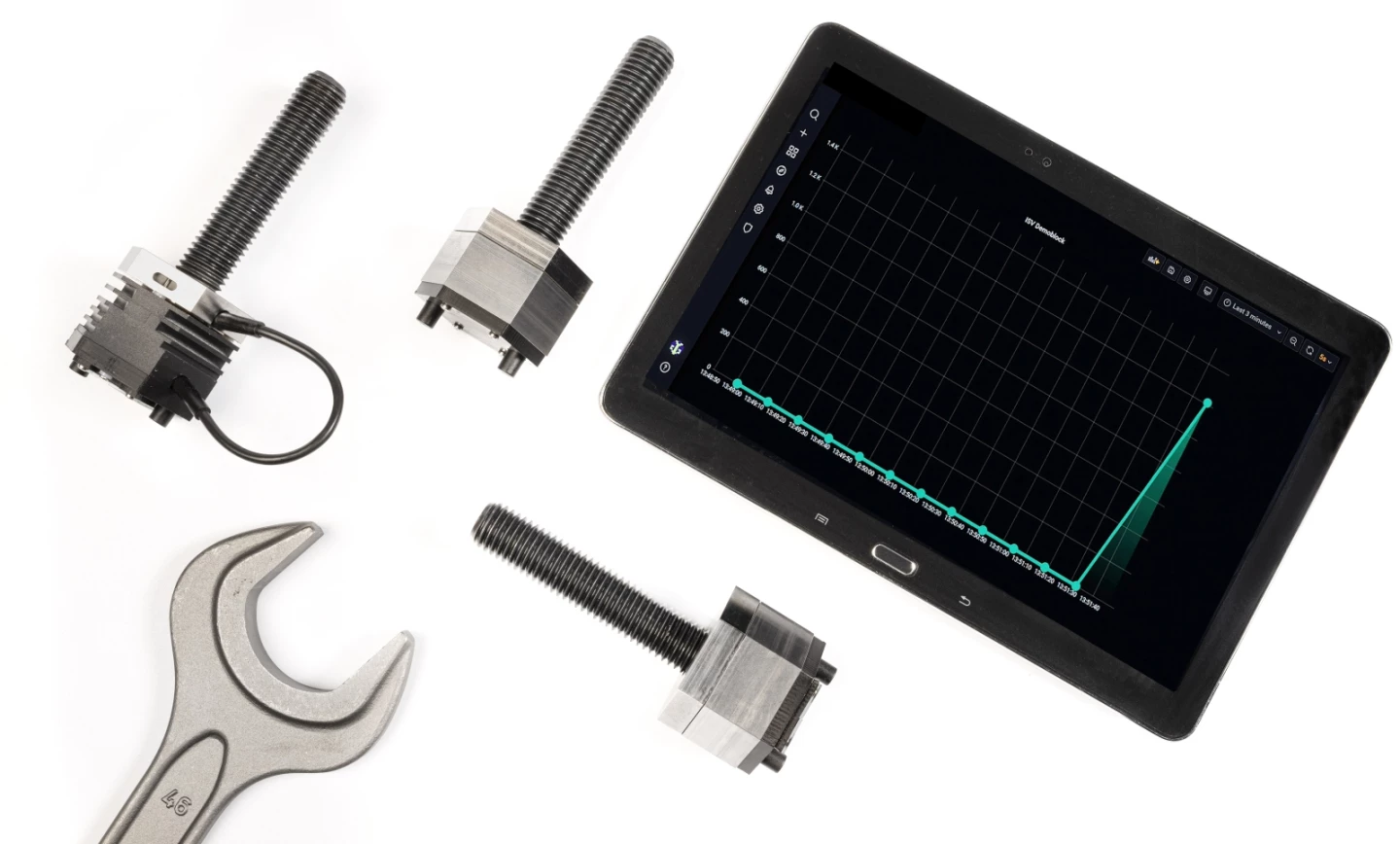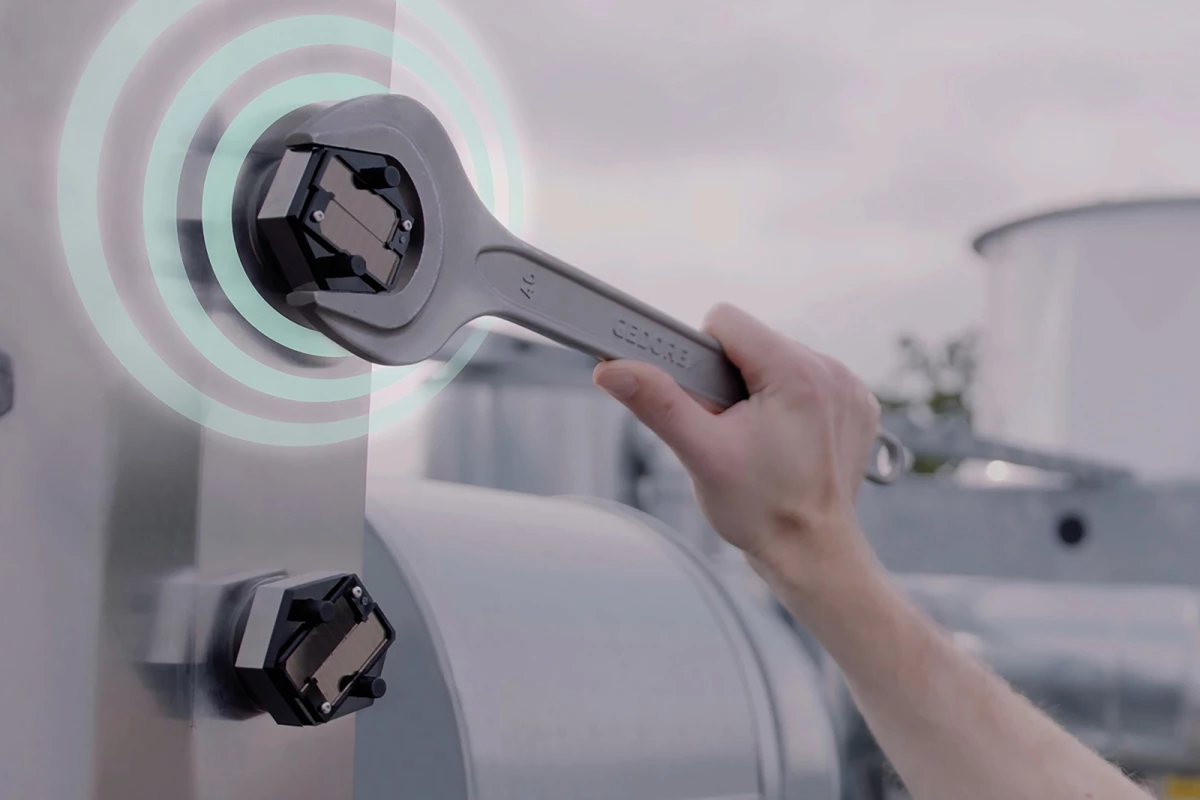It's easy to forget that structures such as bridges, wind turbines and scaffolding are held together by screws which could come loose ... with catastrophic results. The new Smart Screw Connection system is designed to warn authorities before that happens.
Created by scientists from Germany's Fraunhofer Cluster of Excellence Cognitive Internet Technologies, the setup not surprisingly consists of a screw and a washer.
The washer, however, incorporates a pressure sensor made of a thin piezoresistive film known as DiaForce. When the screw is initially tightened down, that film registers the preload force at three different points. If the force subsequently changes at any of those points – due to the screw loosening – the electrical resistance of the film changes.
As soon as such a change occurs, it's detected by a radio module in the screw head. That module transmits an encrypted warning signal to a nearby base station, which can be remotely accessed via the internet by maintenance personnel. In fact, using an online portal, it's possible to check the status of every Smart Screw Connection in a given object, at any time.

In the present prototype version of the system, all of the required energy for the screw/washer unit is generated by an integrated thermoelectric generator – it harnesses the temperature difference between the screw head and the environment to generate an electrical current. That said, in locations where there is sufficient sunlight, the system could instead be solar-powered.
"This remote monitoring system allows us, for the first time, to keep an eye on the stability of safety-critical infrastructures at all times, even remotely, and to carry out a proper check on every single relevant screw," said the project leader, Dr. Peter Spies. "This is a major asset in terms of safety. When inspecting a bridge or wind turbine, no engineer is required to be on site and check each screw individually, as all the data are transmitted via radio to the service station."
The Smart Screw Connection system will be demonstrated at the Hannover Messe 2022 trade show, taking place May 30th to June 2nd.
Source: Fraunhofer





